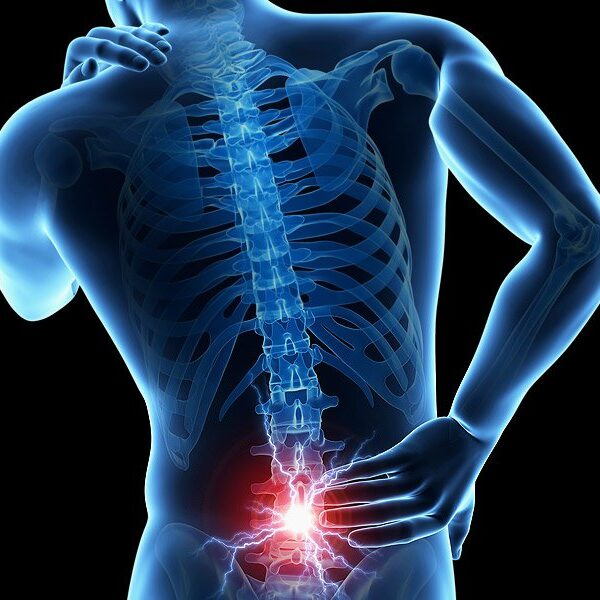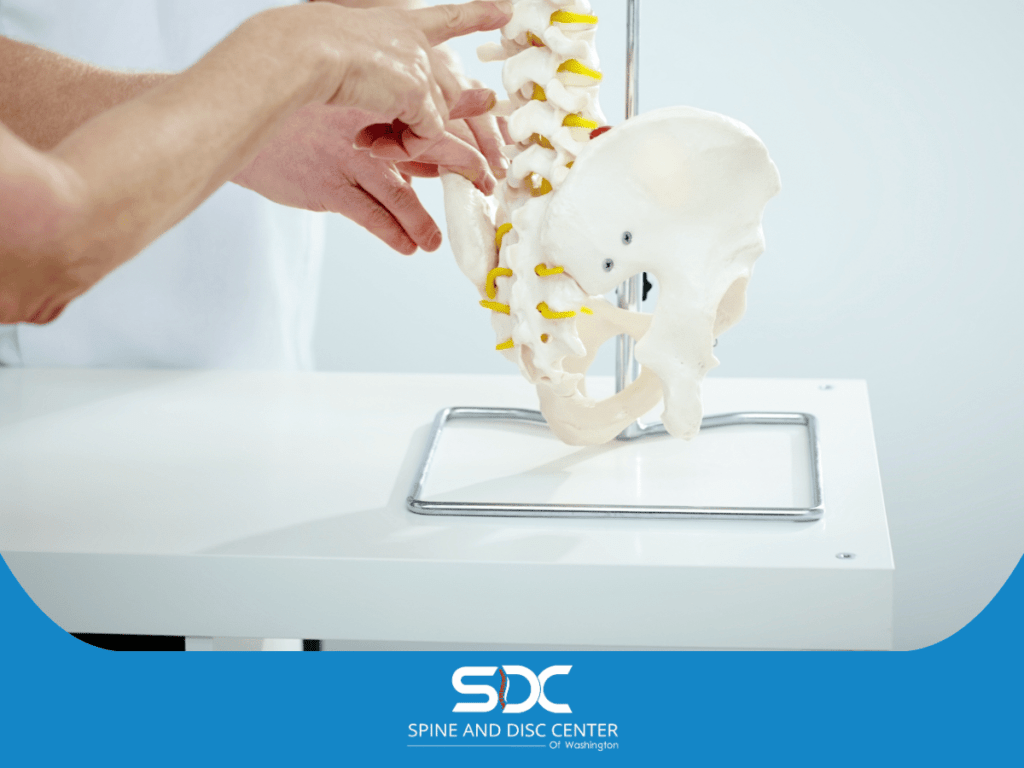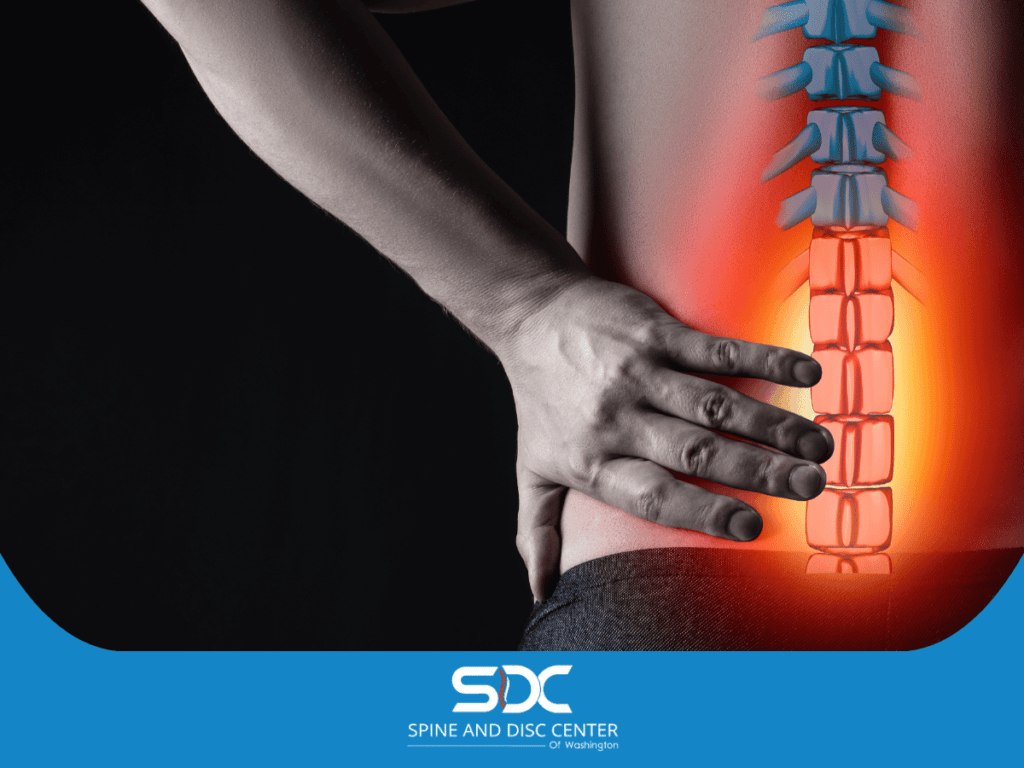Microdiscectomy Explained
Microdiscectomy is a surgical procedure used to treat herniated or ruptured discs in the spine, particularly in the lumbar (lower back) region.
Here’s a breakdown of what microdiscectomy involves:
Procedure
During microdiscectomy, the surgeon makes a small incision in the back and uses specialized instruments to access the affected disc.
The portion of the disc that is pressing on the spinal nerves is then removed, relieving pain and other symptoms associated with nerve compression.
Minimally Invasive
Microdiscectomy is considered minimally invasive because it involves smaller incisions and less disruption to surrounding tissues than traditional open surgery. This results in reduced postoperative pain, quicker recovery times, and a lower risk of complications.
Indications
Microdiscectomy is typically recommended for patients who have not responded to conservative treatments such as medication and physical therapy. It is most commonly performed to alleviate sciatica symptoms, including leg pain, numbness, and weakness caused by a herniated disc pressing on the spinal nerves.
Benefits
The primary benefit of microdiscectomy is the effective relief of symptoms associated with nerve compression. By removing the portion of the herniated disc that is causing pressure on the nerves, microdiscectomy can help improve mobility and quality of life for patients.
Risks
While microdiscectomy is generally considered safe, like any surgical procedure, it carries some risks. These may include infection, bleeding, nerve damage, and recurrence of disc herniation. However, serious complications are rare, and the potential benefits of the surgery often outweigh the risks.
Recovery
Recovery from microdiscectomy is typically relatively quick. Most patients can expect to return home the same day or the day after surgery and resume normal activities within a few weeks. Physical therapy may be recommended to aid in recovery and prevent future spine problems.
Understanding Laminectomy
Laminectomy is a surgical procedure used to relieve pressure on the spinal cord or nerves by removing a portion of the lamina, the bony arch that covers the spinal canal. Here’s what you need to know about laminectomy:
Procedure
During laminectomy, the surgeon makes an incision in the back and removes part of the lamina or the entire lamina, depending on the extent of the compression. This enlarges the spinal canal, creating more space for the spinal cord and nerves and relieving pressure on them.
Indications
Laminectomy is typically recommended for patients with spinal stenosis, a condition characterized by narrowing of the spinal canal. It may also be performed to treat other spinal conditions that cause spinal cord or nerve compression, such as herniated discs or bone spurs.
Benefits
The primary benefit of laminectomy is the relief of symptoms associated with spinal cord or nerve compression, including pain, numbness, tingling, and weakness. By creating more space in the spinal canal, laminectomy can help improve mobility and quality of life for patients.
Risks
Like any surgical procedure, laminectomy carries some risks, including infection, bleeding, nerve damage, and spinal instability. However, serious complications are rare, and the potential benefits of the surgery often outweigh the risks for most patients.
Recovery
Recovery from laminectomy varies depending on the extent of the surgery and individual factors. Most patients can expect to stay in the hospital for a few days after surgery and may need several weeks to months to recover fully.
Physical therapy may be recommended to aid in recovery and rehabilitation.
Choosing the Right Procedure
Several factors should be considered when deciding between microdiscectomy and laminectomy to determine the most appropriate treatment option for your specific condition.
Factors to consider include
- Severity and location of spinal compression
- The underlying cause of compression (e.g., herniated disc, spinal stenosis)
- Overall health and medical history
- Preferences regarding surgical invasiveness and recovery time
H4 Microdiscectomy may be preferred for:
- Patients with a single-level herniated disc causing sciatica
- Those seeking a minimally invasive procedure with a shorter recovery time
Laminectomy may be preferred for:
- Patients with spinal stenosis or compression at multiple levels of the spine
- Those requiring more extensive decompression or with complex spinal conditions
Ultimately, the decision between microdiscectomy and laminectomy should be made in consultation with your healthcare provider, who can provide personalized recommendations based on your individual needs and circumstances.
H3 The Final Thought
This blog post serves informational purposes only. Please schedule an appointment with a qualified healthcare professional for personalized guidance and the right treatment for your specific condition.






